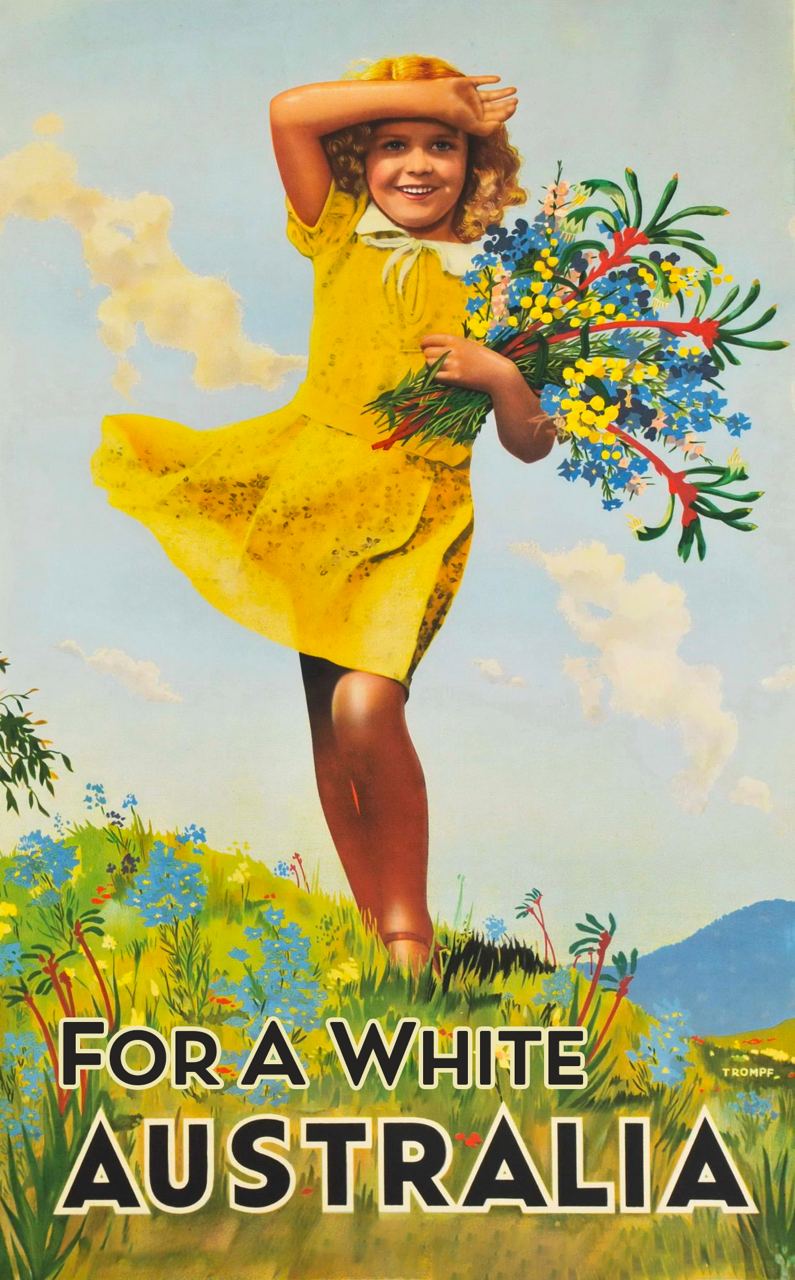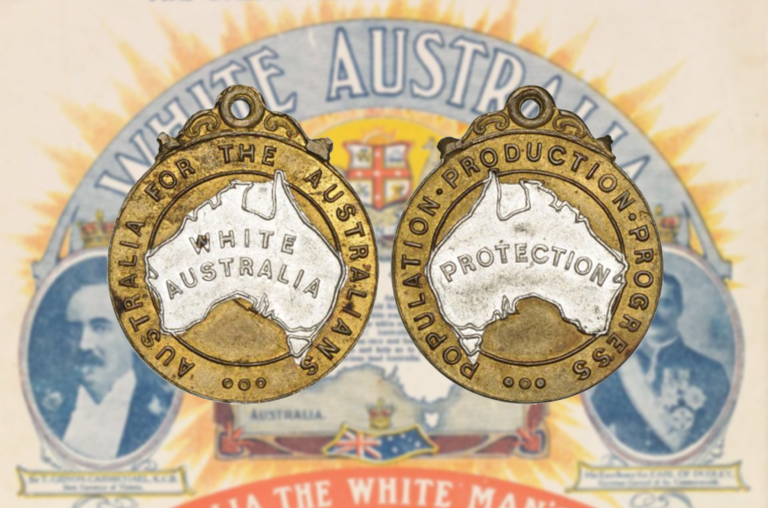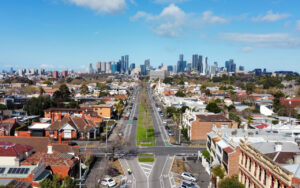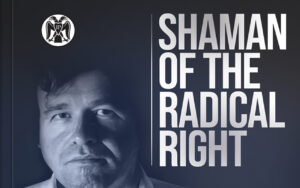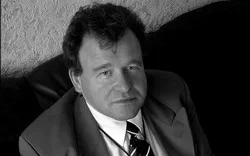It’s an uncomfortable truth for much of the Australian public, but everything we love and value about Australia we owe to the White Australia Policy.
It is so central to our national character that New South Wales’ 23rd Premier Jack Lang once said:
“White Australia must not be regarded as a mere political shibboleth. It was Australia’s Magna Carta. Without that policy, this country would have been lost long ere this.”
The events that occurred before federation led directly to it and the implementation of the policy. After its abolition, our social values and culture still has its direct connection to the emerging Australian sentiment and ideals that took place during our early colonial period and flourished during our formative century, from 1850 to 1950. The policy is directly responsible for everything we associate with Australian culture, our national identity, social values, political framework and our customs and traditions.
At its core, Australia is a White creation. Before Captain James Cook landed in Botany Bay in 1770, Australia didn’t exist. The land mass was there, and the Aboriginals inhabited it, but the land was undeveloped and had no infrastructure or political system to formulate it into a country. This all changed when European men and women came to settle and develop the colonies.
Those who diminish the European foundation for Australia by saying the land doesn’t belong to us, because “sovereignty was never ceded” and use phrases like “White Australia has a black history”, don’t understand Australian history. This historical analysis will help dispel these myths.
Our history stems from hundreds of years of European, but more specifically, British history. Viewed in this way, White Australia is thousands of years in the making and was inevitable. Even the most overlooked details of our culture are thousands of years old: Wedding rings, for example, are an Ancient Roman tradition that represents permanence, strength, eternal love and commitment.

Extreme times in the 19th century & Australian federation:
Two of the most enduring aspects of Australian culture that we see today are our version of secularism and our value of mateship. Australian secularism is unique from the abolitionist French tradition which is more atheistic. Our secularism comes from the rising sectarian tensions between Anglos and Irish during the early 1800s, where initially there was a sense of conformity to the Anglican Church. This tension resulted in the Castle Hill Rebellion in 1804, but was later eased with the Bourke Church Act in 1836. This gave equal footing to Catholics and Protestants, with the state funding the construction of churches for both denominations.
This stance was best elaborated on in 1887, when The Bulletin, Australia’s most popular magazine by late 1880s, wrote:
“By the term Australian we mean not those who have been merely born in Australia. All White men who come to these shores — with a clean record — and who leave behind them the memory of the class-distinctions and the religious differences of the old world; all men who place the happiness, the prosperity, the advancement of their adopted country before the interests of Imperialism, are Australian. In this regard all men who leave the tyrant-ridden lands of Europe for freedom of speech and right of personal liberty are Australians before they set foot on the ship which brings them hither.”
The above quote exemplifies perfectly how Australia is a unique country with its views on ethnic, class and religious cooperation, while remaining a White Christian country.
This is also seen with Australia’s value of mateship, which can be traced back to Captain Arthur Phillip in the 1790s. His view was that, given how the Port Jackson Settlement was inhabited by both convicts and free men, they should both be afforded a sense of common decency for the benefit and survival of the colony. This meant allowing each other to live side by side with dignity, and once a convict’s sentence was up, he would be able to live as a free man in the colony and have a new start in life, even given land and the opportunity to learn a trade.
We still see this dignified and enlightened outlook today, as regardless of if you’re a tradie or an office worker, class distinctions and the type of work you do aren’t a source of conflict or denigration in Australia.
The White Australia Policy was also the result of many decades of non-White immigration into Australia during the mid 19th century and the racial and social tensions that followed. We can point to examples like the race riots at Buckland River in 1857, Lambing Flat in the early 1860s, Clunes in 1876, and the Eureka Rebellion from 1851 to 1854, where thousands of White working men were willing to risk their own lives for the welfare of White Australian working towns and families.
During the gold rush, Chinese goldminers would often disembark in South Australia and New South Wales, and because of the £10 tax per head from the Victorian government, would resort to making the 500km trek overland to avoid the tax and make it onto the Victorian goldfields.
Life on the goldfields was rough. The racial diversity in such close proximity caused problems and inevitably resulted in conflict. The Europeans either worked alone or in small groups and would frequently abandon spots for areas rumoured to be richer. The Chinese, on the other hand, worked in larger groups covering larger areas of land, were rumoured to muddy the water holes, were thieves, worked on the sabbath, lived frugally and were insanitary. They worked for longer hours for less returns, which drove down the value of labour, and were accustomed to simple sleeping quarters and subsisted on basic food.
This contradiction of living conditions sparked the later social and economic ideals of the White Australia Policy, by not allowing White Australians to be degraded to slave-like working conditions and pay by law, and the emerging Australian ideals and standards that we still value today. These ideals were expounded upon by Alfred Deakin in his 1903 election victory speech.
As previously mentioned, early Australia was a radically different conception of what a White country could be. A great example of this is the early settlement of South Australia. The free colony was proclaimed in 1836, and there was so much hope for what the colony could look like, that no gaol was included in Colonel Light’s 1837 plan. The SA police force is the third oldest centrally organised police service in the world and was only formed in 1838 after rising concerns of felons from neighbouring colonies entering the new settlement, ruining the colony’s convict-free status.
Given the lack of unity on a national scale throughout the colonies regarding immigration policy and having no central mechanism to enforce the newfound ideals Australians were developing, the need for federation was a consideration that was beginning to take shape.
The late 19th century saw the important Tenterfield Oration by Sir Henry Parkes in 1889. This speech is considered the start of efforts towards Australian federation. It advocated for nation building through a federal government and federal parliament, a national army for defence and security and vast railways connecting the states for the movement of troops from the army.
This was a struggle for all states to agree with, as Western Australia is infamously known as the last state to federate and even considered secession, due to the other colonies experiencing an economic depression. If Western Australia accepted federation, they were concerned about the colony’s economic and political power being weakened.
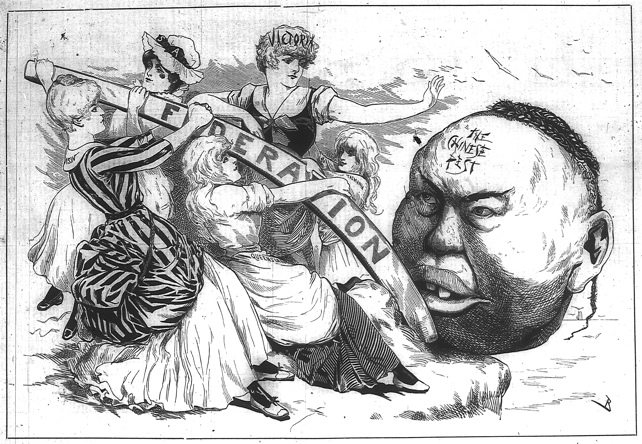
The struggle to defend White Australia from attacks on all sides:
The policy was passed in 1901 under the name “Immigration Restriction Act 1901”, but in practice it was what we know today as the White Australia Policy. The Act followed the Pacific Island Labourers Act 1901, which saw the mass deportations of approximately 7,500 Pacific Islander labourers from the Queensland and northern New South Wales sugarcane fields.
The policy was primarily racial, but this racial outlook for Australia included well-measured economic and social concerns to maintain Australian standards of living and allow Australian culture to develop and flourish.
The practice of the capitalist class replacing White labour in key industries with cheap coloured labour from abroad remained unpopular. The capitalists weren’t the only ones opposed to an explicitly White Australia and consistently tried to undermine this ideal, notably in 1922 when the South Australian Premier proposed developing Northern Territory (under South Australia’s control at the time) with indentured Asian labour.
Their view was that White men and women were unsuitable for tropical climates, and instead non-whites should be brought in to do the work instead. A newspaper article from 1907 further shows the growing acceptance of the White Australia Policy in contrast to the South African situation at the time, with coloured labour replacing White labour on job sites. This sentiment is still present in White Australian workers today, regardless of how well articulated it is. The importation of non-whites into Australian industries as a replacement for White workers, as was the case during the Lambing Flat riots, has always meant the lowering of working conditions and wages for White workers.
Key figures in the struggle for White Australia like Prime Minister Alfred Deakin viewed total mobilisation of the White working population to fill our industries with White labour as an ideal. In his aforementioned 1903 election victory speech he advocated that Australian workers must be paid fair wages and afforded “the maintenance of conditions of life fit for White men and White women.” This outlook sees its fruits in the Awards Rates that we have today.
Additionally, the Crown opposed implementing the policy into our constitution because they thought such a stance could harm their trade relations with Japan, another example of putting economic concerns before racial matters. Despite the Crown taking a softer approach to White Australia for economic reasons, they did allow us our White nationalist project in Australia, by passing the policy as the first major law in Australia’s federal parliament’s history.
The Australian Workers’ Union and the Labor party both had as the first point in their constitutions the cultivation of an Australian sentiment, based upon the maintenance of racial purity and the development in Australia of an enlightened and self-reliant community, with the goal of a White working man’s paradise.
Australians have always valued nativism and Australian-made products over importing foreign-born immigrants and cheap imports from places like China. We are naturally sceptical of anything Chinese or Indian-made, because we view those products as lesser quality. This outlook is underscored by the “Australian-Made” Preference League, who in 1925 said:
“Our White Australia Policy will stand as long as we are able to defend it, and not one minute longer. You can help to make it secure by being a good Australian every day. Remember – Preference to ‘Australian-Made’ means more employment, more employment means more population, and more population means security.”
The attitudes of the White Australia Policy, although not as strongly expressed, do still find themselves present within the sentiments of the White Australian population to this day: mateship and the common decency afforded to every man, labourism and self-reliance, a high standard of living, a preference for Australians and Europeans over foreigners, and Australian-made products.
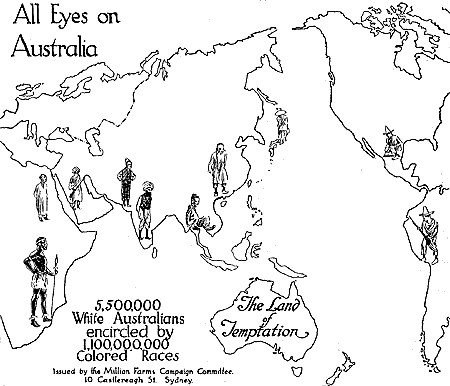
White Australia’s biggest existential threat:
World War Two was Australia’s biggest existential threat during the 20th century. Faced with the possibility of invasion by Imperial Japan, the White Australia Policy was reinforced like no other time in its history. With a population of around 7 million people during WW2, in comparison to Japan who had 73 million people, and being spread across such a vast continent, Australia was reliant on bigger countries for protection.
During both world wars, Australia’s ANZAC soldiers fought for a White Australia. They did so by fighting for the British Empire, as the vast size and resources of the empire gave us the security and protection needed to keep Australia White.
Support for the White Australia Policy is seen by repeated statements from our first 16 Prime Ministers, high ranking officers in the army, and the various Presidents of the Returned Services League. Having the White Australia Policy as one of our first principles during the war kept us united in this ideal and prevented subversive fifth columns from developing.
Later in the war, Winston Churchill favoured abandoning Australian security and interests in favour of a “Europe First” policy, forcing Prime Minister John Curtin to bring Australia’s soldiers home to protect against Japanese invasion, and turn towards the United States for help.
Today we face another existential threat to White Australia with the seemingly endless stream of mass immigration. But we can look to World War Two as an example from recent history exemplifying the need for a uniting ideal for White Australians to rally behind. White nationalism has always highlighted the concerns of White Australians in the face of demographic decline, social issues, economic degradation and valued the future of our people and nation above all else.
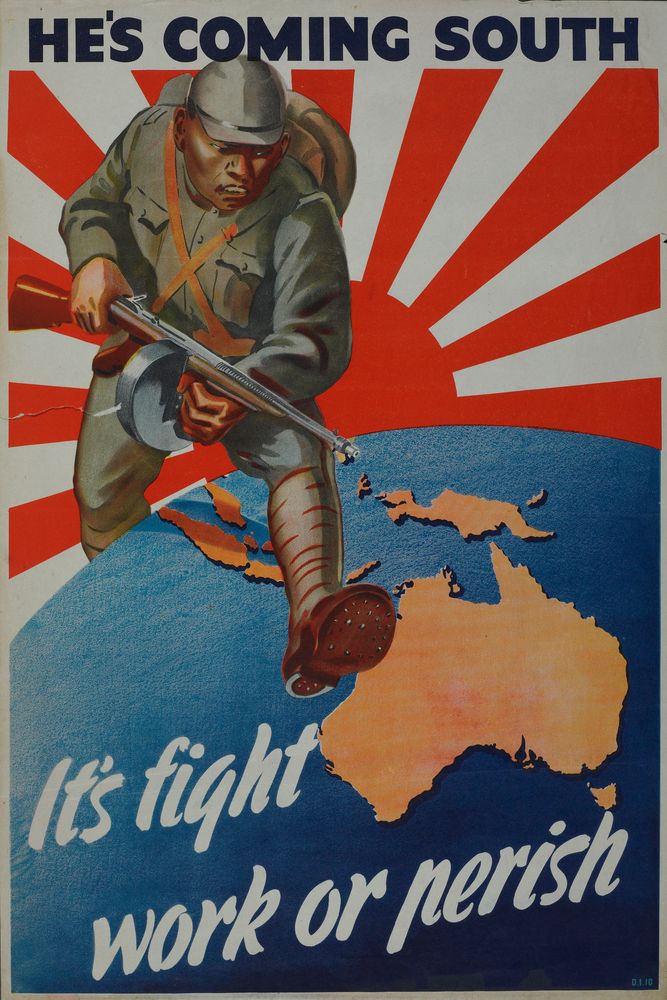
The Australian racial struggle in the 21st century:
Truthfully, this is the hardest time to be a White nationalist in Australia’s history. But the cost of remaining apolitical and not doing anything are too great. The struggle for White Australia in the 21st century now goes beyond demographic issues, as mass immigration is impacting every aspect of life in Australia, especially for young Australians: From decreased standards of living and social trust, housing, rent and food prices increasing, more competition for a job, longer wait times in hospitals, more traffic on the road and less social cohesion as communities become more individualistic and diverse.
Australian nationalists have been forced out of the public square. Nationalist organising has had to resort to wearing masks and black bloc during protests to be protected against domestic terrorism by Antifa. We battle with online censorship to spread our ideas and must contend with the negative reputation that lone wolf actors have given our nationalist cause.
Immigration restriction and nativism will always occupy a space in Australian politics. Our aversion to mass immigration into Australia is a survival instinct which finds its historical roots in the 19th century and the White Australia Policy.
One year’s surplus population from Asia and Africa into Australia, without restrictions on immigration, will see Australia fundamentally changed demographically, culturally and politically. The last time our foreign-born population was at the rate it is now, currently at 30.7% of Australia’s population, was in 1893 when most of the migrants arriving in the colonies were European. This is a drastic change from our lowest rate at 9.8% in 1947. While the situation is dire, there is an alternative path that could be taken, and see White Australians become a supermajority again.
If we are to retain a White country in the future, White Australians need to mobilise, racially collectivise and champion the cause of immigration restriction. Just as we can analyse the events of the past and see how we got to where we are now, we need to be looking into the future to think about what kind of country our grandkids will inherit.
Our Australian ideals of a united, White, free and prosperous nation will make this inheritance a better alternative than the situation we’re in today. Everything that makes Australia unique can be traced to these ideals and the events of Australian history.
We owe everything to our founding fathers and the White Australia Policy.
To learn more about the White Australia Policy, follow @WhiteAusPolicy on X.
